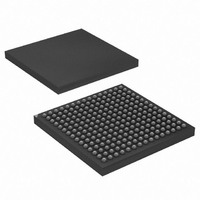AT91CAP7E-NA-ZJ Atmel, AT91CAP7E-NA-ZJ Datasheet - Page 35

AT91CAP7E-NA-ZJ
Manufacturer Part Number
AT91CAP7E-NA-ZJ
Description
MCU CAP7 FPGA 225LFBGA
Manufacturer
Atmel
Series
CAP™r
Specifications of AT91CAP7E-NA-ZJ
Core Processor
ARM7
Core Size
16/32-Bit
Speed
80MHz
Connectivity
EBI/EMI, FPGA, IrDA, SPI, UART/USART, USB
Peripherals
DMA, POR, PWM, WDT
Number Of I /o
32
Program Memory Size
256KB (256K x 8)
Program Memory Type
ROM
Ram Size
160K x 8
Voltage - Supply (vcc/vdd)
1.08 V ~ 1.32 V
Data Converters
A/D 8x10b
Oscillator Type
Internal
Operating Temperature
-40°C ~ 85°C
Package / Case
225-LFBGA
Processor Series
AT91Mx
Core
ARM7TDMI
Data Bus Width
32 bit
3rd Party Development Tools
JTRACE-ARM-2M, MDK-ARM, RL-ARM, ULINK2
Lead Free Status / RoHS Status
Lead free / RoHS Compliant
Eeprom Size
-
Lead Free Status / Rohs Status
Details
Available stocks
Company
Part Number
Manufacturer
Quantity
Price
- Current page: 35 of 520
- Download datasheet (11Mb)
Table 10-1.
10.3
10.3.1
10.3.2
10.3.3
10.4
8549A–CAP–10/08
Peripheral ID
Peripheral Interrupts and Clock Control
Peripherals Signals Multiplexing on I/O Lines
29
30
31
System Interrupt
External Interrupts
Timer Counter Interrupts
AT91CAP7E Peripheral Identifiers (Continued)
Peripheral Mnemonic
The System Interrupt in Source 1 is the wired-OR of the interrupt signals coming from:
The clock of these peripherals cannot be deactivated and Peripheral ID 1 can only be used
within the Advanced Interrupt Controller.
All external interrupt signals, i.e., the Fast Interrupt signal FIQ or the Interrupt signals IRQ0 to
IRQ1, use a dedicated Peripheral ID. However, there is no clock control associated with these
peripheral IDs.
The three Timer Counter channels interrupt signals are OR-wired together to provide the inter-
rupt source 7 of the Advanced Interrupt Controller. This forces the programmer to read all Timer
Counter status registers before branching the right Interrupt Service Routine.
The Timer Counter channels clocks cannot be deactivated independently. Switching off the
clock of the Peripheral 7 disables the clock of the 3 channels.
The AT91CAP7E features two PIO controllers, PIOA which multiplexes the I/O lines of the stan-
dard peripheral set and PIOB which multiplexes the FPGA Interface through MPIO.
Each PIO Controller controls up to 32 lines. On PIOA, each line can be assigned to one of two
peripheral functions, A or B. The multiplexing table in the following paragraph define how the I/O
lines of the peripherals A and B are multiplexed on PIOA.
The column “Reset State” indicates whether the PIO Line resets in I/O mode or in peripheral
mode. If I/O is listed, the PIO Line resets in input mode with the pull-up enabled, so that the
device is maintained in a static state as soon as the reset is released. As a result, the bit corre-
sponding to the PIO Line in the register PIO_PSR (Peripheral Status Register) resets low.
• the SDRAM Controller
• the Debug Unit
• the Periodic Interval Timer
• the Real-Time Timer
• the Watchdog Timer
• the Reset Controller
• the Power Management Controller
N/A
AIC
AIC
Peripheral Name
Not Available
Advanced Interrupt Controller
Advanced Interrupt Controller
AT91CAP7E
External Interrupt
IRQ0
IRQ1
35
Related parts for AT91CAP7E-NA-ZJ
Image
Part Number
Description
Manufacturer
Datasheet
Request
R

Part Number:
Description:
Customizable Microcontroller
Manufacturer:
ATMEL Corporation
Datasheet:

Part Number:
Description:
DEV KIT FOR AVR/AVR32
Manufacturer:
Atmel
Datasheet:

Part Number:
Description:
INTERVAL AND WIPE/WASH WIPER CONTROL IC WITH DELAY
Manufacturer:
ATMEL Corporation
Datasheet:

Part Number:
Description:
Low-Voltage Voice-Switched IC for Hands-Free Operation
Manufacturer:
ATMEL Corporation
Datasheet:

Part Number:
Description:
MONOLITHIC INTEGRATED FEATUREPHONE CIRCUIT
Manufacturer:
ATMEL Corporation
Datasheet:

Part Number:
Description:
AM-FM Receiver IC U4255BM-M
Manufacturer:
ATMEL Corporation
Datasheet:

Part Number:
Description:
Monolithic Integrated Feature Phone Circuit
Manufacturer:
ATMEL Corporation
Datasheet:

Part Number:
Description:
Multistandard Video-IF and Quasi Parallel Sound Processing
Manufacturer:
ATMEL Corporation
Datasheet:

Part Number:
Description:
High-performance EE PLD
Manufacturer:
ATMEL Corporation
Datasheet:

Part Number:
Description:
8-bit Flash Microcontroller
Manufacturer:
ATMEL Corporation
Datasheet:

Part Number:
Description:
2-Wire Serial EEPROM
Manufacturer:
ATMEL Corporation
Datasheet:











